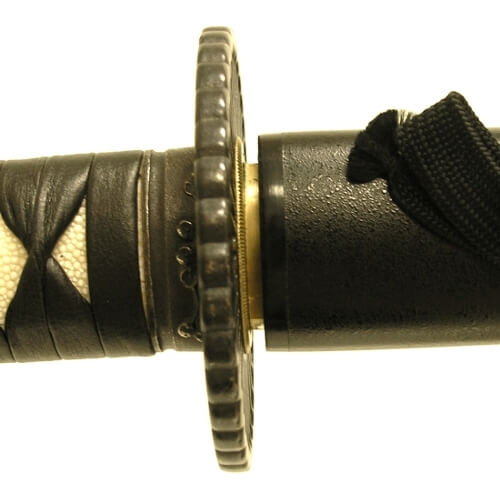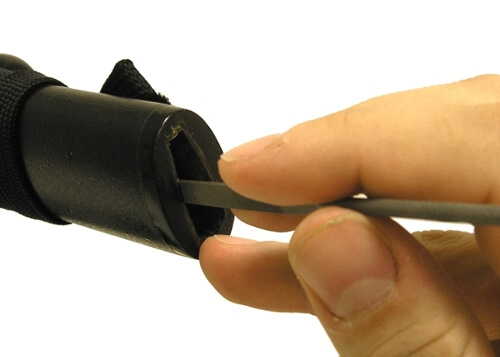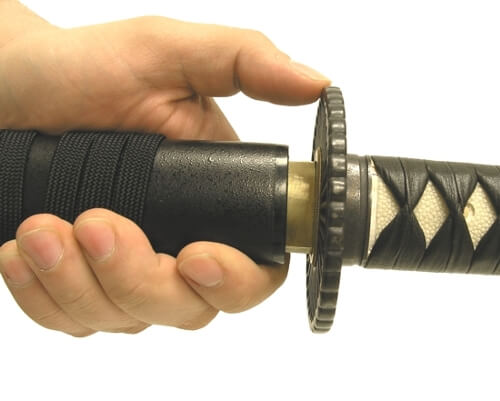Repair a Tight Saya
Remember: Its quicker and easier to check it 50 times than it is to fix it once.
Step 1: Check Your Koiguchi

In order to prevent unintentional unsheathing most katana are produced with a tight fitting saya. The normal gap between the koiguchi (saya mouth) and tsuba (guard) is approximately 2-4 mm. when the katana is sheathed. This gap is normal leaving the habaki slightly exposed. You may want to change this fit so your tsuba touches the koiguchi. Changes to atmospheric moisture can affect the fit causing it to be much tighter than described also making some adjustment necessary. It is important not to force the katana into the saya to close the gap between the tsuba and koiguchi as the excessive force can cause your saya to crack.
Step 2: File Your Saya

If your katana is brand new you may want to leave it for a couple weeks to ensure that it has fully climatized to your living conditions before any adjustment is done. You can loosen the fit by working with a small file inside the koiguchi. Don't use sand paper as it can cause scratching on your blade. Only remove very small amounts of wood, re-checking the blades fit between very small amounts of filing. Your goal is to create a tight enough fit that your sword will not slide unassisted out of the saya, while removing just enough wood for the sword to enter the saya completely closing the gap between the koiguchi and tsuba. A slightly tighter fit in low humidity conditions is a good idea.
Step 3: Katana and Saya Perfect Fit

To test the fit hold the saya in your left hand and push on the tsuba with your left thumb. You should feel some resistance before the “seal” is broken. The resistance shouldn't be so great that it requires more force than your thumb alone. If you find you have removed to much material it can be tightened with the shims available in our traditional maintenance kit.